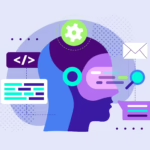Queue Busting At Banks - NetBramha's Two Cents

Bank Queues – How to end it?
Change can be hard and uncomfortable. But when it’s done with an intention, it can be a beautiful force. PM #NaMo’s journey to make India a digital economy is a testament to its own willingness to embrace change for the benefit of people and push India towards being a digital economy.
After the demonetization of Rs 1000 and Rs 500 notes, newly designed notes of Rs 2000 and Rs 500 has evoked mixed response from the Indian public. People are facing trouble over change for new series of Rs 2,000 notes, as shopkeepers are refusing to accept the currency citing scarcity of lower denominated currencies.
As banks have begun to exchange the old currency notes for new ones, long queues are seen lined up at banks, post offices and ATMs. And since there is a limit on the withdrawal of money from Banks and ATMs, which means if you do not use electronic transfers or digital wallets, you will have big problem in purchasing things from the market.
People in rural areas and remote hinterlands without ATMs will find it most difficult to deal with this decision. The impact could be more severe for daily wage labourers who have poor access to banks or are unaware of this procedure. In absence of hard cash, small vendors, grocery shop owners will find it difficult to sell their products.
Ok. Time to get real. So how do we solve this problem of bank queues?
There is no silver bullet or magic wand for big transformation. But there is design. As designers we break down large-scale change into a series of discrete but interconnected acts that together, over time, lead up to a transformation.
What we need is a shift in emphasis from using cash towards cashless transactions. This is best time to go cashless as there is no restrictions on non cash payments by cheques, DDs, debit or credit cards and electronic fund transfer.
How can we foster creative design solutions, especially in big, established banking ecosystems?
Here are few design solutions to improve your banking experience:
- If the Banks can enable the retail stores and other small vendors to utilize mobile POS systems, they can easily cut down on queues without having to implement on expensive equipment. Any business that has queues can utilize these systems in order to improve the overall user experience and can save additional time by avoiding going to bank for cash withdrawal.
- Have Community bankers, who are elected by people. Since money is involved, have a proper track record of the elected community bankers who are acting bankers for ‘X’ period of time, people who are in need are informed of these acting bankers and they are explained how to go about exchanging old notes for new.
- Government can develop an app and launch it. It will hold virtual currency. You will have to photograph the note to use it. And then when you go to the bank to deposit you have to deposit the same note and get the note deleted from the virtual physical wallet. The idea is to mimic real world. People are worried about the notes that they have. Take away that worry and let them transact between them using this physical currency using the virtual app that tracks every (old) note that is in transaction.
- Banks could start an online system where customer can set an appointment online by selecting the date and time they want to go to the bank, enter the transactions they want and receiving a queue number in return. They then go to the branch at the appointed time, further reducing the wait.
- To deposit higher value notes, banks can install cash deposit machines and cash recyclers where people can easily deposit money instead of visiting banks for the same.
- Technology should be provided to people for transferring funds and check balance through a normal phone instead of limiting it to only smart phones. Mobile banking for the poor should be made available for which all banks need to collaborate with mobile companies.
- To help manage queues, banks can introduce kiosks where a customer walks in, goes to the kiosks, keys in the transaction details, e.g. cash deposit transaction, account number and the amount. Kiosk should then issue a token number and the customer can wait till his token number is flashed on the TV screen. At the counter, the customer should give their token number and the teller has to just process the transaction i.e. the teller need not have to key in the transaction anymore and he can serve more customers quickly.
These are just but starting lines to think about. And as a design house which believes in solving problems through Design Strategies we hope the above pointers helps in channelizing efforts towards the problem in current market. Do let us know your thoughts and we shall put it together as a series to be sent to PMO.
Look forward to your participation!


